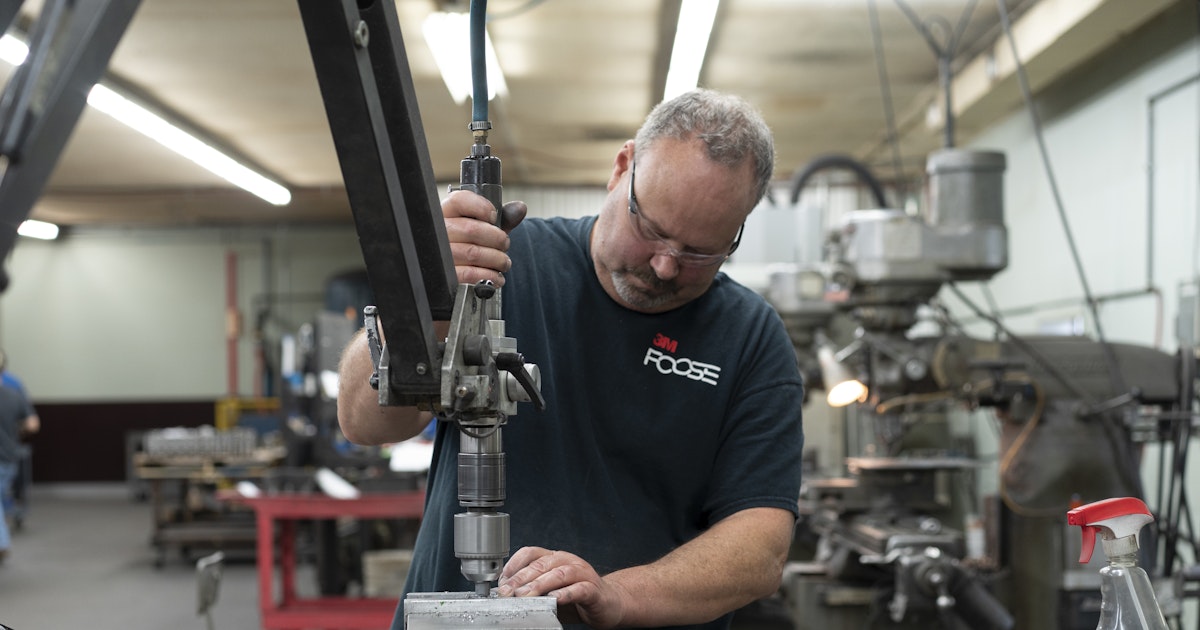Jobs
Understanding America’s Labor Shortage: The Most Impacted Industries

The COVID-19 pandemic caused a major disruption in America’s labor force—something many have referred to as “The Great Resignation.” In 2022, more than 50 million workers quit their jobs, following the 47.8 million who did so in 2021. In 2023, this trend gradually subsided, with 30.5 million workers resigning as of August.
A closer look at what has happened to the labor force can be better described as “The Great Reshuffle.” While quit rates remain high, hiring rates continue to outpace them as many workers have been transitioning to other jobs in search of an improved work-life balance and flexibility, increased compensation, or a strong company culture.
The U.S. Chamber is closely monitoring trends in job openings, labor force participation, and quit rates affecting industries nationwide. Continue reading to explore an analysis of the industries most significantly affected by these trends.
For a broad overview of the state of our workforce, check out our America Works Data Center. An in-depth look at how the worker shortage is impacting the nation is here, and a state-by-state breakdown tracking the worker shortage is here. The data is available here.
Stand Up for Free Enterprise
Join us and become a part of our movement to save the system that will secure our collective future.
Your voice is essential, and your participation is critical.
Food service and hospitality businesses struggle to retain workers
Jobs that are fully in-person and traditionally have lower wages have had a more difficult time retaining workers, even prior to the pandemic. For example, the leisure and hospitality industry has experienced the highest quit rates of all industries, with the accommodation and food services subsector of this industry experiencing a quit rate consistently above 4.5 percent since July 2022.
Across all industries, hiring rates have continuously outpaced quit rates. Looking again at leisure and hospitality, the industry lost 781 thousand workers in January 2024, but 1.05 million people were hired into the industry that same month. In fact, since November 2020, leisure and hospitality has maintained the highest hiring rate among all industries, ranging between 6% to nearly 19%. This hiring rate remains significantly higher than the national average, which has hovered around 3.7 percent since January 2024.
When taking a look at the labor shortage across different industries, the education and health services sector, and the professional and business services sector, consistently exhibit the highest number of job openings. It’s worth noting that professional and business services span a broad spectrum of occupations including legal services, scientific research, as well as roles like landscaping workers, cleaners, and waste disposal workers.
Meanwhile, in more stable, higher-paying industries, such as financial activities and manufacturing, the number of employees quitting has been lower.
A closer look at labor force participation
The most recent jobs report from the Bureau of Labor Statistics indicates that thousands of individuals are joining the workforce, which is good. However, labor force participation still does not match what it was before the pandemic for a variety of reasons.
If the labor force participation rate were at the February 2020 level, we would have an additional two million people in the workforce—and this shortage is impacting all industries in nearly every state. Even if every unemployed worker were to fill an open job within their respective industry, there would still be millions of unfilled job positions, highlighting the widespread labor shortage.

To further understand shifts in the labor force, it is important to look at labor force participation across different industries.
The manufacturing industry as a whole faced a major setback after losing roughly 1.4 million jobs during the onset of the pandemic. Since then, the industry has made significant strides toward recovery, making a concerted effort to address job vacancies. While durable goods manufacturing has seen a more substantial recovery compared to nondurable goods manufacturing, as of January 2024, a gap persists, with 622,000 total manufacturing job openings yet to be filled.
On the contrary, the construction industry faces a labor surplus. The number of unemployed workers with experience in this industry exceeds the available job openings, with an average of 383,917 job vacancies per month in 2023, while the monthly average of individuals with experience in this field seeking employment amounts to 480,333.
It’s worth noting that a labor surplus does not ensure that all positions will be occupied, as workers may not necessarily be located in the geographic areas where the open positions are situated. It also does not imply that an industry will have all the workers it needs in future years.
All industries currently have job openings, with each actively seeking new hires. The rate of hiring varies significantly from one industry to another, with certain sectors bringing in a larger number of new employees at a more rapid rate compared to others.
Consider the mining and logging industry, which is relatively small in terms of employment. From January to December 2023, this industry hired the fewest number of workers, totaling 286,000. This stands in sharp contrast to the leisure and hospitality sector and professional and business services sector. In the same time frame, each of these industries hired around 13 million employees.
Unemployment exists in varying degrees among labor shortages

In the U.S., a healthy unemployment rate typically falls within the range of 3% to 5%. As of February 2024, the national average unemployment rate stands at 3.9%. Within this context, there are 6.5 million people unemployed. This group includes individuals with varying degrees of experience spanning a wide array of industries.
The industries with lower-than-average unemployment rates have fewer experienced candidates to choose from when filling their job openings. This situation leads to heightened competition among businesses in these industries as they vie for the limited pool of available talent.

The prevalence of remote work has dropped precipitously since 2021 despite workers’ preference for flexibility. This year, just a quarter of all employees work remote part of the time. While this is a small number compared to the pandemic high, it towers over the pre-pandemic norm, indicating the permeance of some remote work in the years to come.
Certain industries and occupations simply cannot function without in-person work. The highest propensity for in-person work exists in the hospitality and food services, transportation, and retail trade industries, where nearly 80% of staff work fully on-site. Alternatively, industries with a low amount of physical labor or with customer service tasks are more likely to work remotely, such as the information and finance sectors, where less than 30% of staff are fully on-site.
The U.S. Chamber of Commerce is proud to lead the business community in identifying the actions employers can take to remain competitive to attract and retain talent. Businesses can increase their hiring pools by removing barriers to entering the workforce, such as expanding childcare access, offering innovative benefits, participating in second-chance hiring, and providing opportunities for new and existing staff to be upskilled and reskilled on the job.
The labor market challenges facing businesses are anticipated to continue into the next few decades as our nation’s workforce ages and employers create new jobs. Here’s what the latest data says—and what businesses need to know—about the workforce of the future.
Learn about how the U.S. Chamber is driving solutions through the America Works Initiative. For more information on the America Works Initiative, contact Stephanie Ferguson at sferguson@uschamber.com.
About the authors

Stephanie Ferguson
Stephanie Ferguson is the Director of Global Employment Policy & Special Initiatives. Her work on the labor shortage has been cited in the Wall Street Journal, Washington Post, and Associated Press.

Makinizi Hoover
Makinizi Hoover is the Senior Manager of Strategic Advocacy at the U.S. Chamber of Commerce. Her work includes the development and project management of comprehensive data centers that serve as a valuable resource for policymakers, businesses, and the public.







:max_bytes(150000):strip_icc()/roundup-writereditor-loved-deals-tout-f5de51f85de145b2b1eb99cdb7b6cb84.jpg)


